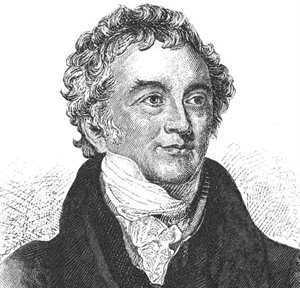 Thomas Young began to study medicine in London in 1792 under John Hunter and obtained the degree of Doctor of Medicine in 1796. In 1801 Young was appointed professor of natural philosophy (mainly physics) at the Royal Institution, where he delivered 91 lectures in two years, and in 1811 Young became physician to St George's Hospital.
Thomas Young began to study medicine in London in 1792 under John Hunter and obtained the degree of Doctor of Medicine in 1796. In 1801 Young was appointed professor of natural philosophy (mainly physics) at the Royal Institution, where he delivered 91 lectures in two years, and in 1811 Young became physician to St George's Hospital.
Young possessed the most remarkable intellect and his opinions were sought on civic and national matters, such as the introduction of gas lighting to London and methods of ship construction.
An encyclopaedic mind
In 1804 Young had become secretary to the Royal Society, a post he would hold until his death. From 1819 he was superintendent of the Nautical Almanac and secretary to the Board of Longitude. From 1824 to 1829 he was physician to and inspector of calculations for the Palladian Insurance Company. Between 1816 and 1825 he contributed 63 articles in the Encyclopaedia Britannica, and throughout his career he authored numerous books, essays and papers.
In Young's own judgment, of his many achievements the most important was to establish the wave theory of light. To do so, he had to overcome the century-old view, expressed in the venerable Isaac Newton's "Optics", that light is a particle. Feeling that this did not adequately explain his own observations, Young proposed a number of theoretical justifications supporting the theory that light was more accurately described as a wave. To support his theory he developed two famous experiments that are frequently taught to this day. He used a ripple tank to demonstrate interference, using water waves as a substitute for light. He then compared the patterns to those he derived from the double-slit experiment (Young’s interference experiment), where he demonstrated that light showed the same interference patterns, thus superseding Newton’s theory of corpuscular light.